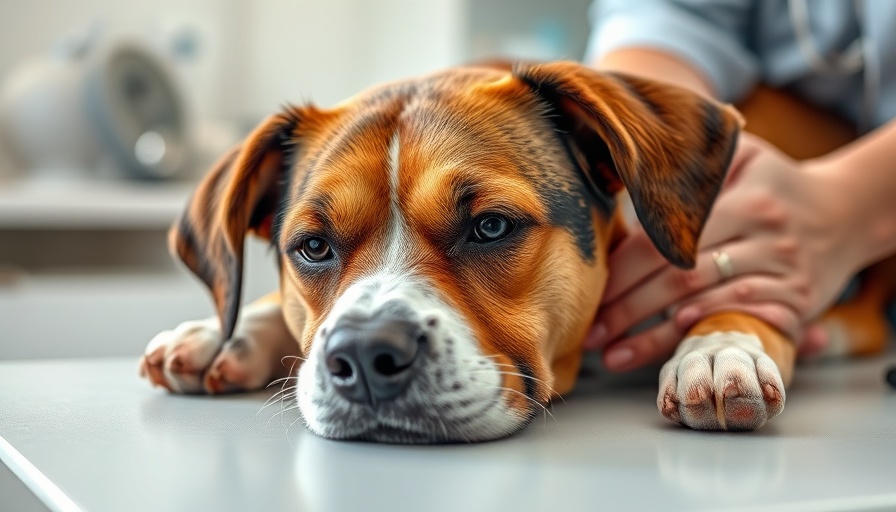
Understanding Yeast Infections in Dogs
Yeast infections in dogs are more than just a nuisance; they can significantly impact your pet's quality of life. Yeast is a fungus that resides in your dog's digestive system, playing a vital role in digestion under normal circumstances. However, when its levels surge, particularly from species like Candida albicans and Malassezia, problems arise.
Causes and Symptoms of Yeast Infections
A typical dog maintains a balance between harmful yeast and beneficial bacteria in their gut. This equilibrium keeps yeast levels low and helps prevent infections. Yet, factors such as dietary changes, antibiotics, or immune issues can shift this balance, allowing yeast to overgrow. When this happens, symptoms can manifest in various ways, including:
- Constant chewing or licking of paws
- Dark, rusty-colored hair between toes
- Blackened skin with possible hair loss
- Foul odor and greasy coat
- Repeated ear infections or head shaking
- Speckles on the underbelly and hair loss on the tail
These symptoms can sometimes overlap with conditions like leaky gut syndrome or allergies, making vigilance essential. If untreated, yeast overgrowth can cause further discomfort, which is why early identification is crucial.
Effective Home Remedies for Yeast Infections
Managing a yeast infection in dogs doesn't always require vet visits; several home remedies can offer relief. Here’s how you can help:
- Dietary Adjustments: A dog's diet plays a significant role in yeast management. Consider a diet lower in carbohydrates and sugar, which yeast thrives on. Adding natural immune boosters like CBD oil or including herbal remedies can further support your dog's health.
- Regular Cleaning: Bathing your dog with a medicated shampoo can stave off yeast growth. Make sure to thoroughly dry them afterward as moisture promotes yeast proliferation.
- Safe Essential Oils: Some pet owners have found success using safe essential oils such as tea tree or lavender when diluted correctly. Always consult your vet prior to use.
- Holistic Therapies: Consider incorporating alternative therapies into your dog’s routine. Acupuncture or chiropractic care may help in managing overall wellness, potentially supporting a healthier gut environment.
Preventive Measures for Future Infections
Prevention is better than cure! Keeping your dog active and their living environment clean is essential. Regular exercise and good hygiene can prevent the conditions that lead to excessive yeast growth. If your dog is prone to allergies, utilizing natural flea remedies can also reduce the risk of yeast infections, as these can exacerbate skin irritations.
Emotional and Mental Health Considerations
A dog’s physical discomfort can affect their mental health and yours, too. When managing a yeast infection, consider how it impacts their behavior. They may become withdrawn or irritable due to discomfort. Understanding this connection can help you to be more compassionate during their treatment. Engaging in positive, calming activities together can strengthen your bond and aid in your dog's recovery.
Conclusion: Proactive Steps for Healthier Dogs
If your dog’s symptoms persist or worsen, it’s wise to seek professional veterinary advice. But understanding how to manage yeast infection at home with these holistic approaches can empower you to take better care of your beloved pet. Take action now — adjust their diet, explore natural remedies, and maintain their overall health and well-being.
 Add Row
Add Row  Add
Add 




 Add Row
Add Row  Add
Add 

Write A Comment